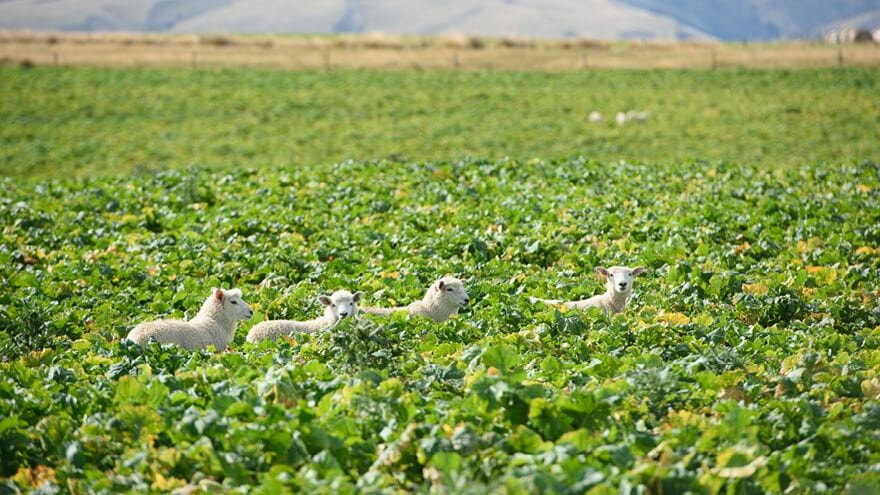
Optimising lamb performance over summer
As the milk rearing phase of lamb production is drawing to a close, and the rapid liveweight gain associated with good lactation performance from ewes has occurred, the challenge now is to keep lambs growing optimally post-weaning.
The biggest driver of Lamb Liveweight Gain (LWG) post-weaning is the quality and quantity of forage consumed, be that pasture-based or specialist crops such as lucerne, clovers or summer brassicas. On average, over summer most lambs only achieve a little over 100 grams per day LWG on dryland pastures. This is due to lower Metabolisable Energy (ME) and dropping protein levels coinciding with the higher fibre content in pasture.
To achieve high growth rates, forage consumed ME levels need to be 11+ Megajoules of Metabolisable Energy (MJME) and protein levels higher than 16 percent. To achieve this, pasture management throughout summer requires close attention or growing specialist forage crops to provide the quality and quantity of feed needed to get lambs growing quicker.
Worm challenge severely impacts LWG. Summer 28-day preventative drench programmes, using effective drenches, are designed to clear the lamb of adult worms and eliminate worm egg output for 21 days, thereby reducing pasture larval challenge over time. With high worm challenges, the lamb’s daily feed intake is reduced, along with a diversion of protein/energy as an immune response against the worm, rather than being directed into LWG.
With widespread drench resistance, a reduction of lamb value of 14 percent occurs with the use of ineffective drenches.¹ This is through poorer feed conversion efficiency and lower carcass weights/grades over time. Make sure the drench you are using is effective through a simple post-drench check this summer and avoid growing non-profitable lambs.
Using cattle to groom pasture to improve quality will also reduce worm challenge. Rotating un-drenched ewes behind lambs also helps with pasture quality and low worm egg output, the concept of refugia, a powerful tool in slowing drench resistance.
Some other causes of lower LWG in lambs are low selenium and cobalt (Vitamin B12) remedied via supplementation. On some farms, viral pneumonia is significant. Farmers can manage this issue by reducing risk factors such as avoiding dusty yards by using sprinklers, mustering in the cool of the day and not holding lambs at weaning for shearing.
Facial eczema and other pasture fungal diseases, such as grass staggers, do not help LWG in lambs. Managing rank pasture and reducing dead material accumulating in the early part of summer helps reduce this risk, or if this is not possible, feeding summer brassica/legume crops helps avoid disease and drive LWG.
By increasing LWG, lambs are finished earlier, consume less total feed with less drench used which in turn slows resistance. With more feed available, farmers can focus on increasing ewe performance going into the autumn mating period.
To discuss how to optimise lamb growth through summer post-weaning, contact your local PGG Wrightson Technical Field Representative.
1. Sutherland, I.A., Bailey, J., & Shaw, J. (2010). The production costs of anthelmintic resistance in sheep managed within a monthly preventive drench program. Veterinary Parasitology. 171(3-4):300-4.



